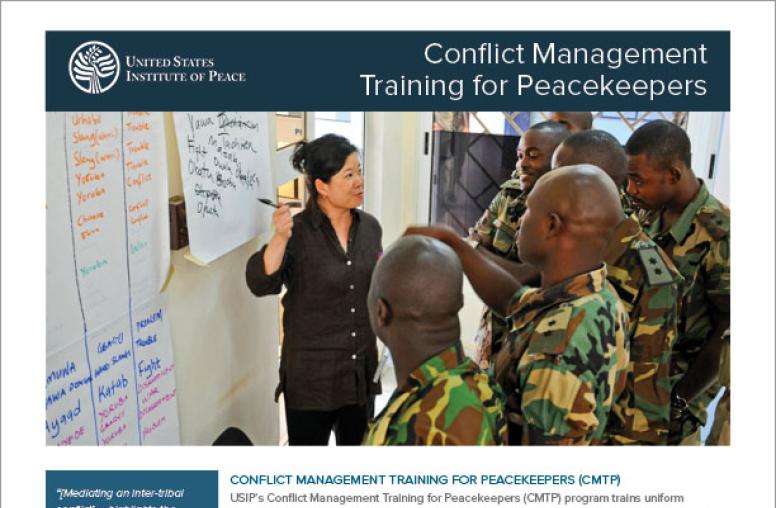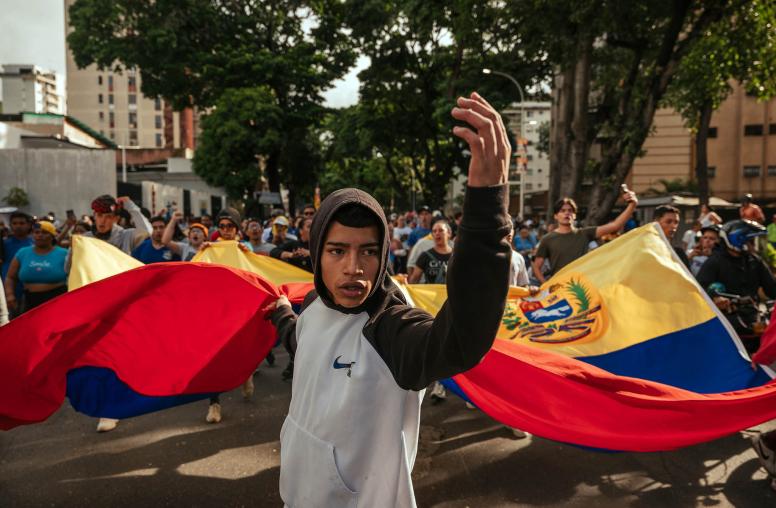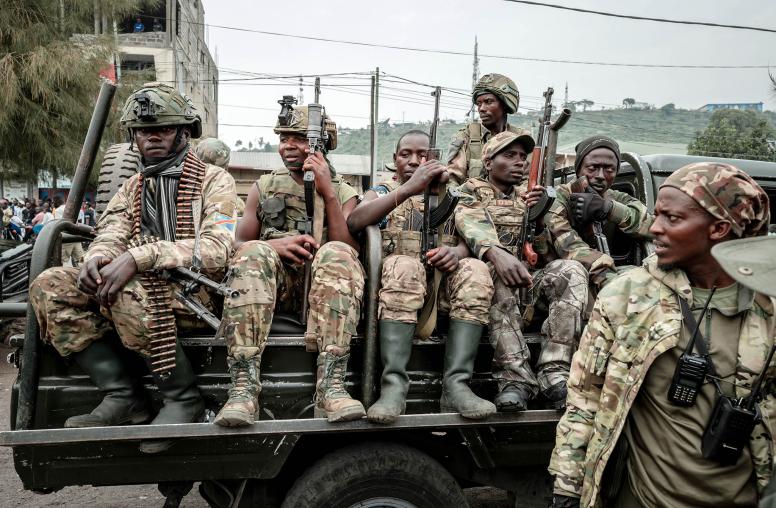Managing a Mediation Process
THE USIP BOOKSTORE IS TEMPORARILY UNAVAILABLE
Summary
Managing the Mediation Process offers an overview of the process of mediating interstate and intrastate conflicts. Each of its six chapters covers a different step in the process, identifying what needs to be done at that step and how best to accomplish it:
- Assess the Conflict
- Ensure Mediator Readiness
- Ensure Conflict Ripeness
- Conduct Track-I Mediation
- Encourage Track-II Dialogue
- Construct a Peace Agreement
Consolidating the practical wisdom of managing a mediation process into an easily digestible format, this handbook is designed to help mediators identify areas where they may need more research or preparation, as well as options and strategies relevant to the particular case on which they are working. Examples from past mediation efforts are provided.
About this Handbook
This handbook is part of the series the Peacemaker’s Toolkit, which is being published by the United States Institute of Peace. For twenty-five years, the United States Institute of Peace has supported the work of mediators through research, training programs, workshops, and publications designed to discover and disseminate the keys to effective mediation.
The Institute—mandated by the U.S. Congress to help prevent, manage, and resolve international conflict through nonviolent means—has conceived of The Peacemaker’s Toolkit as a way of combining its own accumulated expertise with that of other organizations active in the field of mediation. Most publications in the series are produced jointly by the Institute and a partner organization. All publications are carefully reviewed before publication by highly experienced mediators to ensure that the final product will be a useful and reliable resource for practitioners.
About the Authors
David Smock is vice president of the Institute's Center for Mediation and Conflict Resolution and associate vice president of the Religion and Peacemaking program, one of the Centers of Innovation. Previously he served as director of the USIP's Grant program and coordinator of Africa activities. He has worked on African issues for over thirty years and lived in Africa for eleven years. As a staff member of the Ford Foundation from 1964 to 1980, he served in Ghana, Kenya, Lebanon, Nigeria, and New York.
From 1980 to 1986, Smock served concurrently as director of the South African Education Program, a scholarship program that brings black South African students to U.S. universities, and vice president for program development and research for the Institute of International Education. After serving as executive associate to the president of the United Church of Christ from 1986 to 1989, Smock became executive director of International Voluntary Services, supervising development projects in Africa, Asia, and Latin America.
He is editor of Interfaith Dialogue and Peacebuilding, Making War and Waging Peace: Foreign Intervention in Africa, and co-editor of African Conflict Resolution: The U.S. Role in Peacemaking. He received a Ph.D. in anthropology from Cornell University and holds an M.Div. from New York Theological Seminary.
A senior partner in the consulting firm Social Insight, Amy L. Smith writes on a variety of international issues, including conflict management, transitional justice,public health, and education issues. Her work generally concerns extracting public policy recommendations from scholarly research. She has conducted research for, taught for, and worked with a variety of advocacy and policy organizations in the United States, Brazil, and Switzerland. She is the author of A Forced Agreement: Press Quiescence to Censorship in Brazil.


